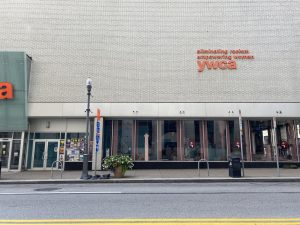‘The Book of Boba Fett’ is stuck in Star Wars’ past
February 16, 2022
2.5 Globes
The Super Bowl happened last weekend, and a lot of the commercials relied heavily upon nostalgia. Remember “Austin Powers”? Here’s an ad for General Motors. Remember the Jim Carrey movie “The Cable Guy”? Here’s an ad for Verizon Wireless. These companies are relying heavily on a thing you’ve seen before to sell you on something new.
“Star Wars: The Book of Boba Fett” has this same problem, but unlike a 30-second long “The Sopranos” themed car commercial, “Book of Boba Fett” is a seven episode long season of television. The entire show boils down to “remember Return of the Jedi?” Almost all of the imagery of the series is ripped straight from that movie, with most of it being from the first 20 or so minutes of it.
The biggest issue of this is the location of Tatooine. As a whole, Star Wars has a problem with Tatooine. For those unfamiliar, Tatooine is the desert planet that initially appeared in the very first Star Wars film (now referred to as “Episode IV: A New Hope”). It’s an iconic location, arguably one of the most iconic science fiction locations of all time, but it does not need to show up in every piece of Star Wars content released (which, if you don’t follow Star Wars, it appears in pretty much everything). A major part of the appeal of Star Wars is that it’s an expansive galaxy with millions of planets ripe for exploring, with billions of possible unique stories to be told. Unfortunately, most of those stories happen to be set on, or at least partially on, Tatooine.
But the nostalgia problems don’t just stop at the location. A majority of the story is carried by callbacks and the biggest problem Star Wars is currently facing: cameos. Having fan-favorite characters appear in cameos isn’t an issue, in fact it’s something that can be done quite well. Recently, the movie “Spider-Man No Way Home” did this wonderfully, because the filmmakers understood something that the Star Wars team doesn’t: fanservice has to be earned in the story.
A lot of the fanservice (although not all) in the “Book of Boba Fett” feels unearned. The most notable example of this features two Jedi interacting who have never canonically interacted before. The actual scene with them is fantastic, and it’s well executed , no doubt. But when you realize that it has almost nothing to do with the actual story of Boba Fett, and more so belongs in an episode of “The Mandalorian,” you start to scratch your head.
Therein lies the biggest head-scratcher of this show: episodes five and six are literally episodes of “The Mandalorian.” That’s no exaggeration—Boba Fett doesn’t appear in episode five and only appears for a brief moment in episode six. What’s even more frustrating is that episode five is probably the best piece of Star Wars content released in years.
This, again, proves the point: Star Wars needs to stop dwelling in its past. Part of the reason why “The Mandalorian,” especially “The Mandalorian” season one, is so fantastic is because it’s its own thing. There’s no reason to pull all of the imagery for your new show from “Return of the Jedi.” ‘Return of the Jedi” still exists, and it will always still exist. If people want to watch “Return of the Jedi,” it’s on Disney Plus, literally right next to the “Book of Boba Fett.”
While the showrunners here showed some legitimate talent in their ability to create quality Star Wars content, they ultimately whiffed it by sidelining Boba Fett. This show has loads of fun, driven most notably by Pittsburgh native Ming-Na Wen (whose family owns nearby restaurant the Chinatown Inn) as Fett’s sidekick, Fennec Shand. There’s a lot to love in this show, but unfortunately there’s also a lot that makes you shrug, and hope that the upcoming Obi-Wan Kenobi show is good.


















